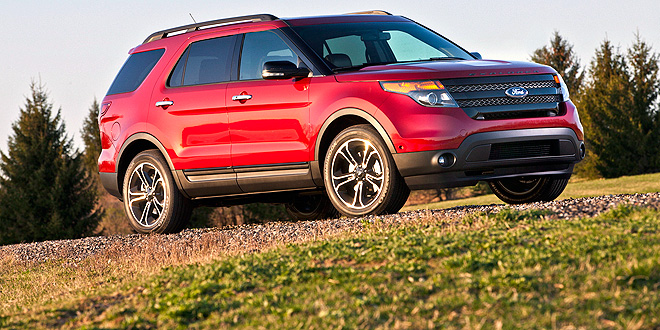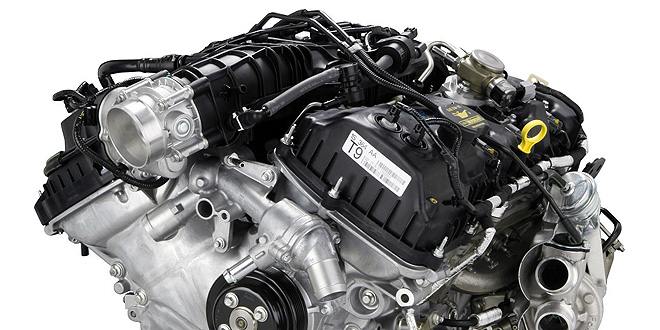By 2016, cars and trucks sold in America are going to get significantly better fuel economy than they do today.
Part of this emphasis on fuel economy is because buyers are asking for it. Gas prices have been inconsistent in recent years, and people are thinking twice before picking a giant gas guzzler from a dealer’s lot. A bigger reason, though, is that the federal government is mandating it. In a few short years, cars are going to have to average 37.8 mpg and trucks 28.8 mpg under new Corporate Average Fuel Economy (CAFE) rules. Compared to the old 2010 rules, that means fuel economy will improve by 37 percent in cars and 23 percent in trucks.
How will automakers make that happen? They’re actually already taking steps in that direction, so let’s take a look at what one classic American company — Ford, famous for making muscle cars and the world’s most popular pickup truck — is doing to shake things up before the new rules go fully into effect.
NEW ENGINES:
When you think about a Ford F-150, the best-selling truck on Planet Earth, what do you imagine under the hood? The obvious answer for car nuts is a big, honkin’ V8. Eight-cylinder engines have been popular in Ford trucks for decades because they’re powerful and durable, but they don’t have the best reputation for fuel economy.
Ford has responded by doing a couple of things. One, they’re constantly modifying their V8 engines with little tweaks that produce more power from less gasoline.
More importantly, though, they’ve built a totally new engine architecture call EcoBoost to improve fuel economy while still getting strong performance. These EcoBoost engines use direct gasoline injection and turbochargers to make sure every droplet of fuel results in optimum power. Not only do the new engines help Ford’s small cars, but the F-150 has been perhaps the biggest beneficiary of all. The V6-powered EcoBoost F-150 sold more than 100,000 copies in 2011, and it’s sure to inspire General Motors and Chrysler to follow suit.
LIGHTER ARCHITECTURE:
Another classic Ford vehicle, the Explorer, practically defined the SUV segment in the 1990s. It brought a new level of capability and practicality to families across America, but it was also known as a gas guzzler for its big engines and heavy, truck-like architecture.
Ford still makes the Explorer today, but the newest version is built totally differently. It has a car-like, unibody frame now, which means it’s really a crossover vehicle as opposed to an SUV. That also means it is rated for 28 mpg on the highway — far better fuel economy than the old version.
APPEALING SMALL CARS:
Finally, one of the biggest hurdles to getting Americans to lower their fuel consumption is convincing them to buy smaller cars.
Ford has long built a lineup of efficient compact cars, but many buyers in the past have chosen to buy gas guzzlers anyway. They saw compact cars as stripped-down economy vehicles that couldn’t be comfortable to drive.
Ford has countered that mindset recently by not only building better, more comfortable compact cars like the Focus and Fiesta, but also outfitting them with more luxurious equipment.
Ford’s SYNC system is the perfect example. This cutting-edge technology is known for being easy to use while offering features like voice-activated music, hands-free calling, and reading cell phone text messages audibly.
And SYNC isn’t just available on Ford’s bigger, more expensive cars. You can get it on the $13,200 Fiesta, the least expensive car Ford offers.
Overall, Ford isn’t alone in gearing up for the new CAFE fuel economy requirements, but it does provide a good template for what buyers and the rest of the car industry can expect down the road: new engines, lighter body shells, and an emphasis on making compact cars more comfortable and fashionable.






